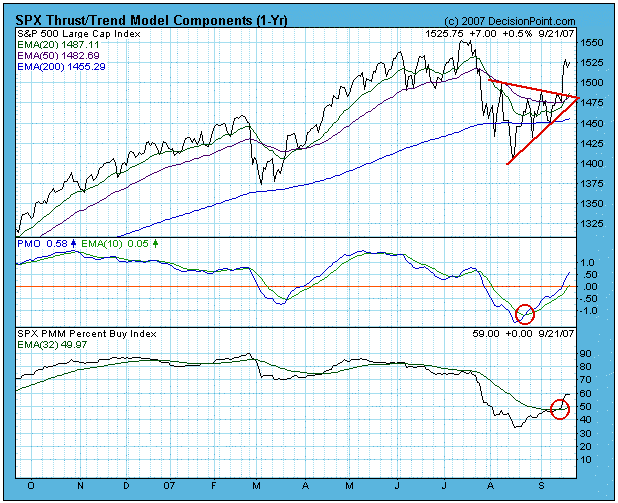Ever since the market hit its correction lows in August I have written three articles, each emphasizing that the odds favored a retest of those lows (see Chart Spotlight on our website). As it turns out, we haven't had any decline that I would classify as a retest, and the market has broken out of a triangle formation on high volume. When the breakout happened, it eliminated any reasonable possibility of a retest, in my opinion. Sometimes the low odds take it.
One thing I have been cautioning about is to not get too bearish, because many of our key indicators had remained bullish. Another thing I should mention is that we should never get too invested in a forecast. I have watched as many of my bearish colleagues, after being proven wrong by the market, are still tying to justify their being bearish rather than trying to get aligned with the market. The market will eventually prove them right because, because, because . . . Maybe they will be right sooner than we think, but for now the market looks as if it will be moving higher for a while.
My bullish stance is due to our S&P 500 timing model having switched from neutral to a buy on September 13, three trading days prior to the Fed-induced market breakout. Also, prior to the breakout, about half of the market and sector indexes that we track with our primary timing model were also on buy signals. On the day of the breakout, the other half switched to buy signals.
The chart below shows the two components needed to generate a buy signal – the Percent Buy Index (PBI) crossed above its 32-EMA, AND the PMO (Price Momentum Oscillator) was above its 10-EMA. Note that the PBI is only at 59%, but it is trending up, which is most important.
Bottom Line: The long-awaited retest did not materialize, and. in my opinion, the market has begun another leg upward that should challenge and exceed all-time highs for the S&P 500 Index.






